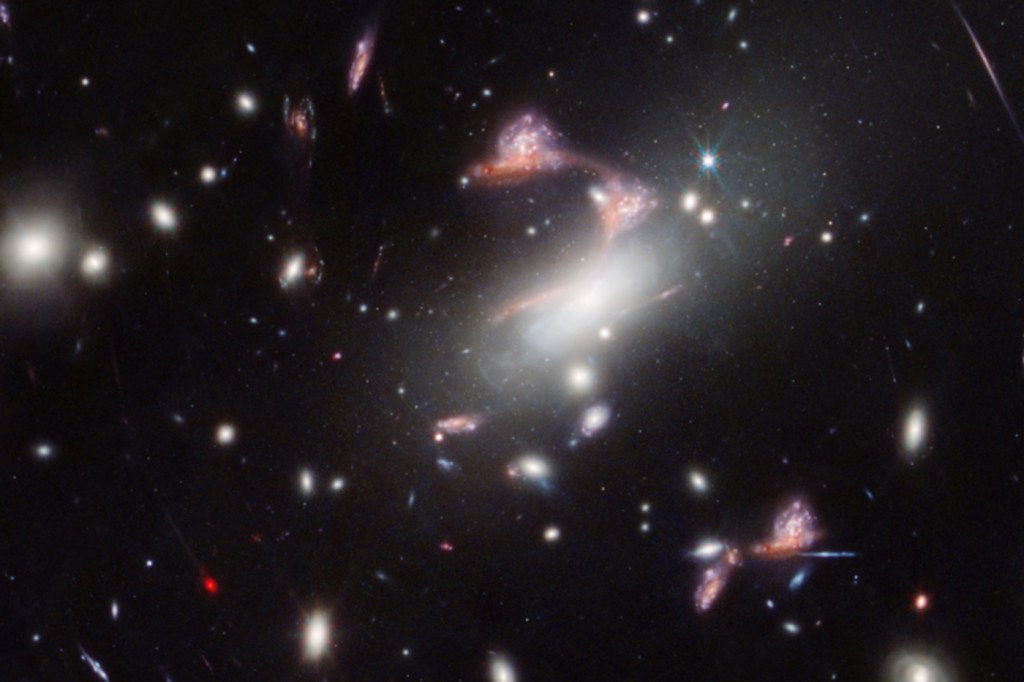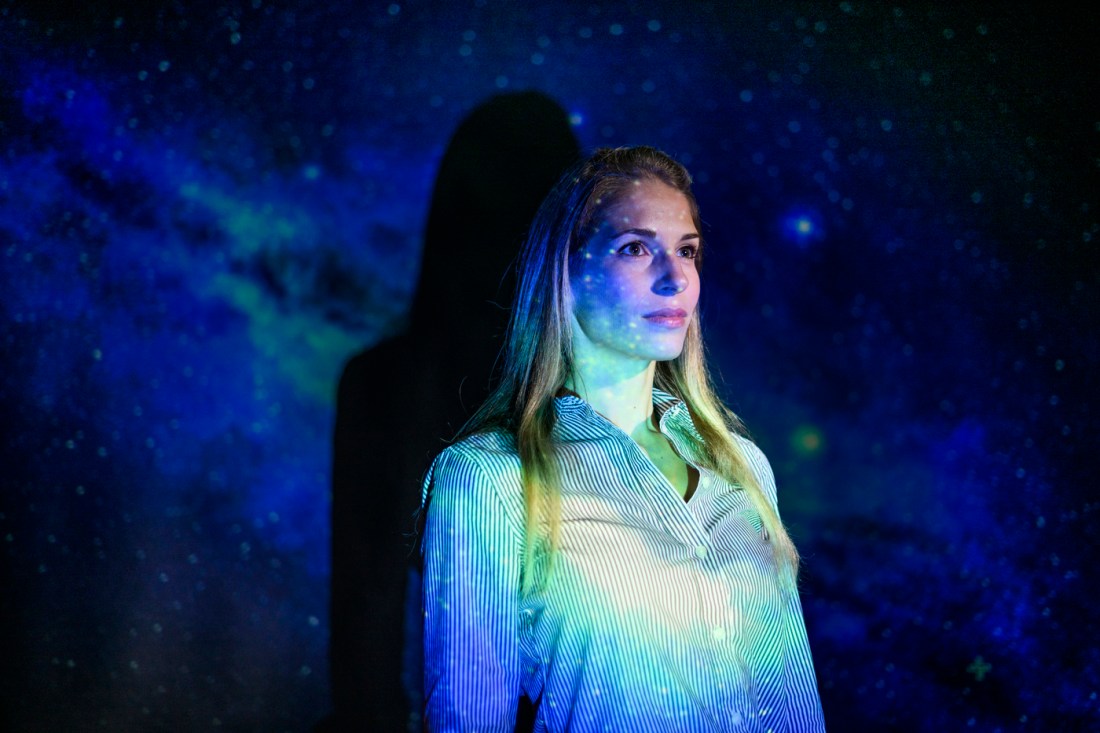Giant cosmic question answered. Northeastern astrophysicist explains the science behind the image captured by the Webb telescope
A Northeastern astrophysicist says the image will provide new insights into the universe’s adolescence and possibly the answer to an age-old question that remains a mystery: How do galaxies get created?

For centuries, astronomers have looked to the cosmos for answers to the universe’s biggest questions. But an image recently released by NASA indicates the universe might have questions of its own.
Captured with NASA’s powerful James Webb Space Telescope, the image shows a cosmic question mark made up of galaxies and cosmic dust. The image has astronomers buzzing, but what exactly is happening here?
No, this is not some kind of sign from the heavens. Instead, this piece of cosmic punctuation is actually the result of a rare alignment between two distant galaxies and a concept called gravitational lensing, says Jacqueline McCleary, an assistant professor of physics at Northeastern University.
Gravitational lensing is what happens when massive objects in outer space, like galaxies and groups of galaxies called galaxy clusters, distort the fabric of space-time and any light that is traveling from behind the object, says McCleary.
“In this system the gravitational lens is a cluster of galaxies,” McCleary says. “Galaxy clusters are very massive, so the distortion of spacetime around them is extreme. What this galaxy cluster has done is strongly lensed … a pair of distant galaxies.”

Gravitational lensing essentially creates a cosmic microscope that not only distorts but magnifies and brightens objects, helping the already powerful Webb telescope capture a sharp image of such distant galaxies.
However, McCleary explains, the “question mark pair,” as astronomers have come to call this formation, isn’t actually shaped like a question mark.
“It is the warping of spacetime caused by the galaxy cluster that stretches out the light from these two different galaxies, a bit like a funhouse mirror,” McCleary says. “They’re not actually question mark shaped. They just appear like a question mark shaped from our vantage point here on Earth.”
Featured Posts
The two glowing blue clusters at the top of the question mark are actually the same galaxy but, warped by gravitational lensing, appear as multiple images, she says. The same galaxy appears five times in the image captured by NASA.
Meanwhile, the red shape making up the body of the question mark is a separate galaxy that happens to be close to the bluish galaxy at the top of the image. It appears red because it is made of cosmic dust that scatters blue light and instead emits longer wavelength red light that is picked up by the infrared capabilities of the Webb telescope.
In a case of cosmic happenstance, the dot at the bottom of the question mark is a totally unrelated galaxy that just happened to be in the right place at the right time.
What’s most notable about the image is less what it is than when it is, McCleary says. The rare combination of cosmic alignment and gravitational lensing has created a time machine: This galaxy cluster is so far away that the light being captured by the Webb telescope to create this image is from 7 billion years ago, about half of the universe’s current age.
The image provides an unprecedented glimpse of what McCleary calls the “adolescence of the universe.”
“It’s going through its growth spurt,” McCleary says. “This is when stars are being formed, this is when galaxies are being built extremely actively and this is when galaxy clusters are starting to assemble. … [The Webb telescope] lets us study all of these processes, particularly the process of galaxy formation and evolution, in a detail that just wasn’t accessible to us before. It really is a remarkable instrument that gives us insight into a remarkable period in the universe’s history.”
Images like this are invaluable for astronomers and astrophysicists who are, despite centuries of study, still trying to answer a question that is key to helping us understand the universe: How do galaxies get created?
“We don’t have a great handle on how from the primordial soup you get blue, disc-like galaxies like the Milky Way or massive, red elliptical galaxies like the big white one at the center of this image,” McCleary says. “There’s still a lot of mystery there. … What’s really wonderful about this system is that the process of gravitational lensing –– the multiple images, the brightening, the magnification –– allows us to study the process of galaxy assembly, the process by which the galaxy is building itself, in really great and spatially resolved detail.”











